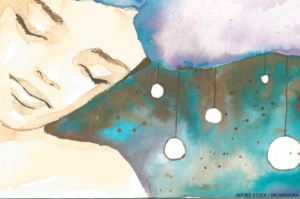 The world didn’t end on Jan. 1, 2000. The Y2K bug didn’t crash airplanes and liquidate bank assets. We were, overall, hopeful for the future—a new millennium full of futuristic visions of a techno-utopia. Fast forward a quarter of a century and we now live in that technologically advanced age that once seemed so far away. With the advantage of hindsight, things turned out considerably different than we had thought when we entered this century. Yet we carry with us many of the same dreams that come from the 1990s and even earlier.
The world didn’t end on Jan. 1, 2000. The Y2K bug didn’t crash airplanes and liquidate bank assets. We were, overall, hopeful for the future—a new millennium full of futuristic visions of a techno-utopia. Fast forward a quarter of a century and we now live in that technologically advanced age that once seemed so far away. With the advantage of hindsight, things turned out considerably different than we had thought when we entered this century. Yet we carry with us many of the same dreams that come from the 1990s and even earlier.
This year, I hope to honor the importance of that process of dreaming and resolve to dream not just bigger but also better. I’d encourage you to join me in dreaming up a better world for the patients with rheumatologic diseases and the clinicians that serve them. Why and how? Let’s Rheuminate!
The Importance of Dreaming
I have a quote by T. E. Lawrence, also known as Lawrence of Arabia, taped to the side of my desk at work: “All men dream: but not equally. Those who dream by night in the dusty recesses of their minds wake up in the day to find it was vanity, but the dreamers of the day are dangerous men, for they may act their dreams with open eyes, to make it possible.”1 It’s an ideal that I hold myself to and a reminder that a large part of a rheumatologist’s job is to dream.
As rheumatologists, we live in a world in which progress often feels incremental. New treatments emerge, new mechanisms of disease are unraveled, and yet our patients’ daily realities—pain, disability, uncertainty—can stubbornly persist. In this environment, dreaming becomes an act of defiance. It’s the process of imagining a world that does not yet exist, but certainly could. Dreams give us the courage to question the status quo and the determination to pursue something better for our patients and for ourselves.
In that sense, dreaming is not a frivolous escape from reality; it is a necessary act of envisioning what may be possible. For every transformative innovation in everyday rheumatology, whether it is a new immunomodulator, a reimagined modality of care or an expansion of a clinical practice—there first had to be a dreamer who dared to imagine it. As clinicians, and especially as rheumatologists, we owe it to ourselves and our patients to hold onto our dreams. They are the seeds of change, and without them, progress stalls.



